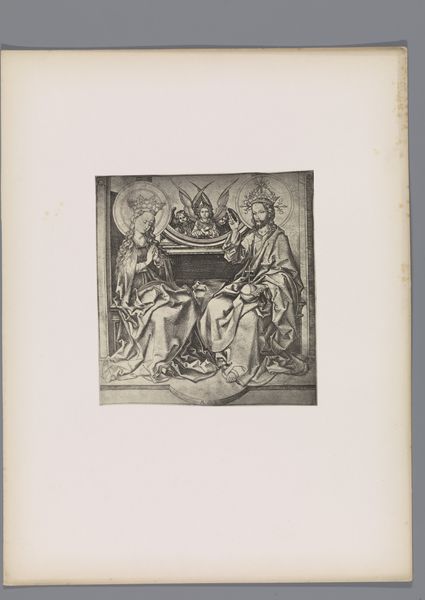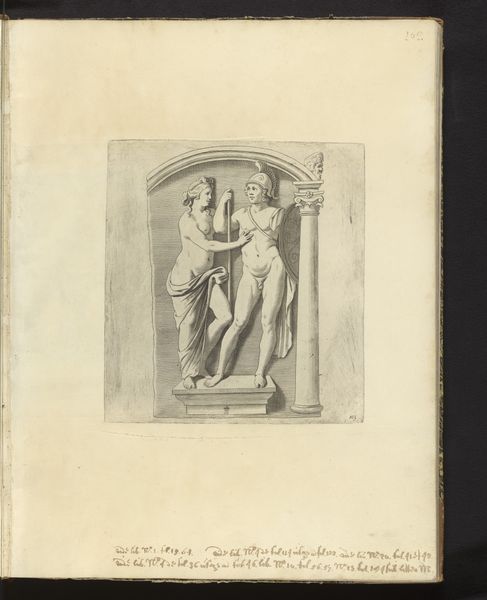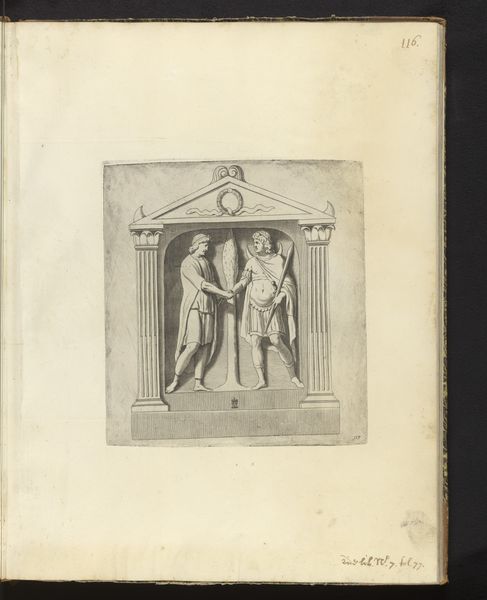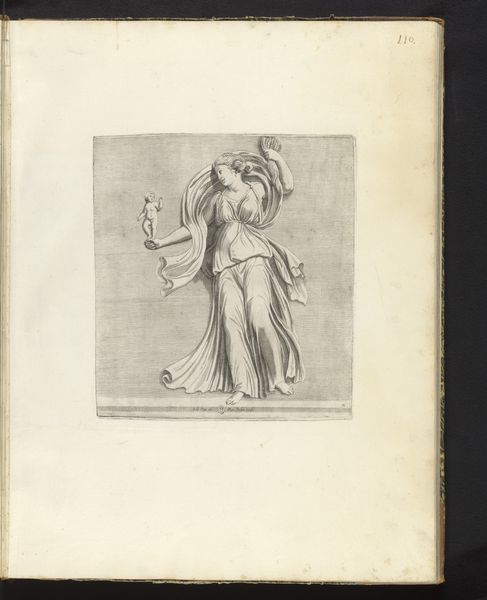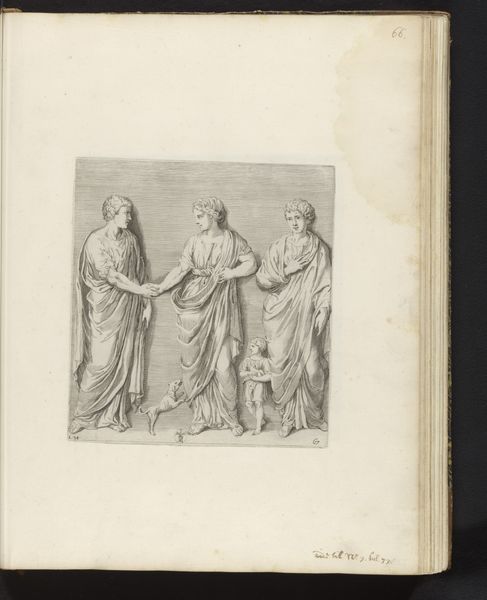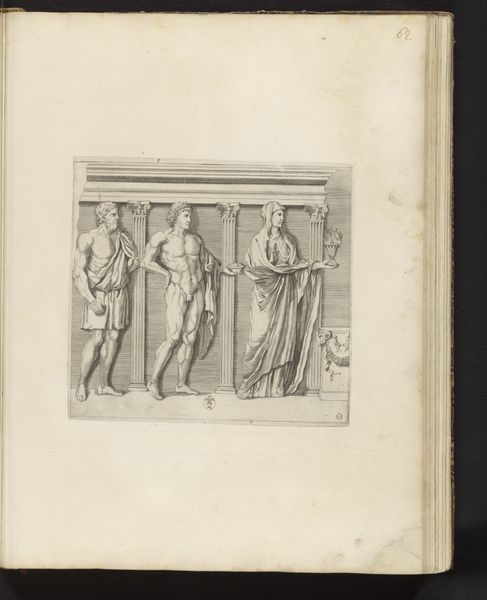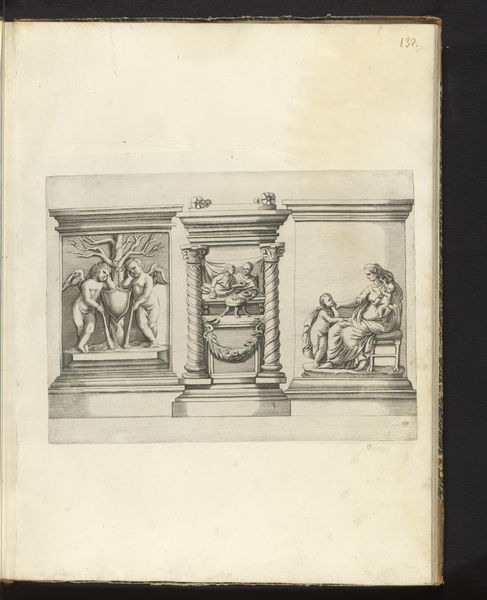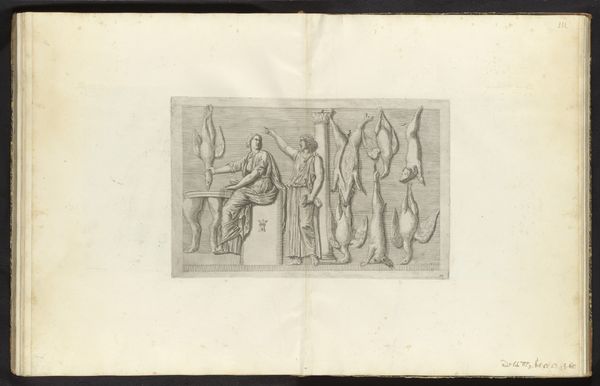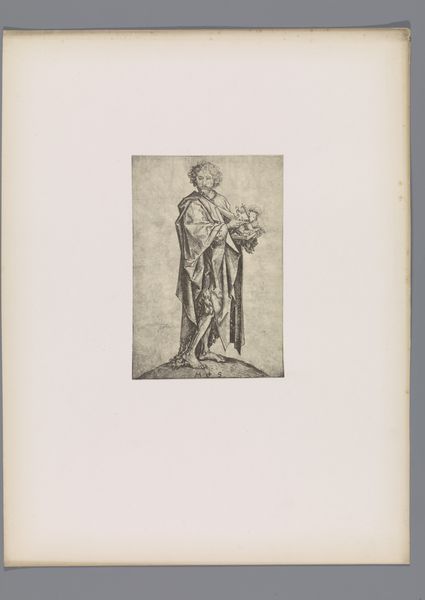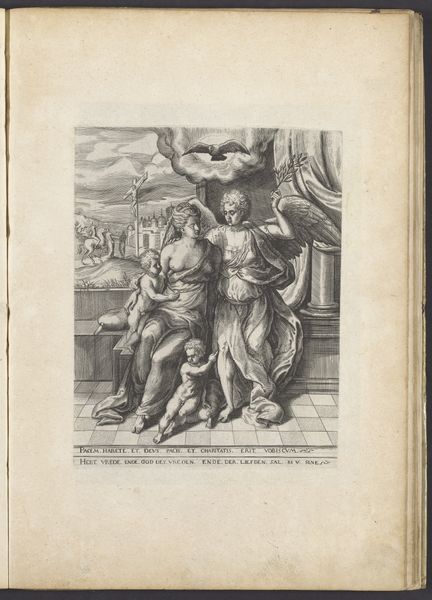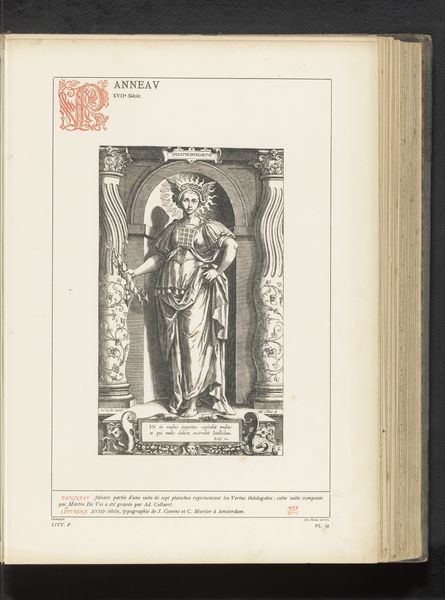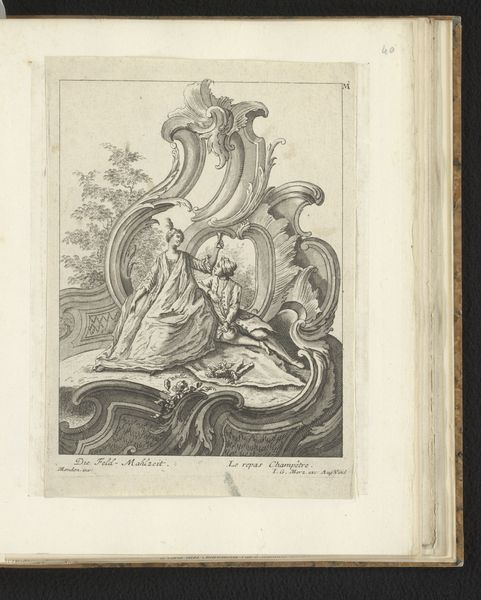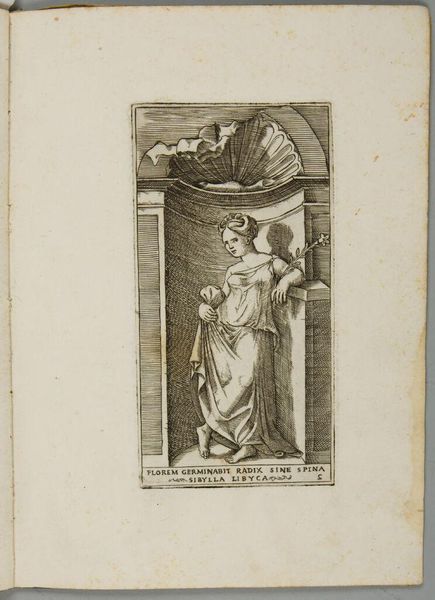
print, metal, relief, engraving
#
baroque
# print
#
metal
#
relief
#
figuration
#
history-painting
#
engraving
Dimensions: height 243 mm, width 224 mm
Copyright: Rijks Museum: Open Domain
Curator: This is a fascinating bas-relief from the period of 1636 to 1647, titled "Bas-reliëf met de voorstelling van een huwelijksluiting," which translates to "Bas-relief with the Representation of a Wedding." It's currently held here at the Rijksmuseum. Editor: It strikes me immediately as rather severe for such a celebratory scene. The figures seem stoic, and the engraving, while detailed, casts a somewhat somber tone. Curator: That sobriety could speak volumes about the socio-political contexts surrounding marriage during the Baroque era. Often, marriage was less about individual love and more about alliances and property. The engraver captures the gravity of such unions, moving beyond simplistic notions of romance. Editor: I do see that the composition is quite balanced. The flanking columns create a strong sense of symmetry, and the figures themselves are carefully arranged to fill the space without feeling crowded. The lines, even in such a reduced palette, have remarkable clarity. Curator: Absolutely, and thinking about the material itself, engraving allowed for widespread dissemination. These images were powerful tools for reinforcing societal norms, depicting idealised yet restrained roles within marriage, reflecting both religious and state expectations of the time. Consider the veil upon the woman's head: What does that symbolise? What did that signify for women within this time frame? Editor: The angels above are interesting, as well. Their presence lends a spiritual, perhaps even performative, aspect to the scene. They also echo the neoclassical forms. Curator: Precisely. It is this blend of classical forms with the heavy, emotionally charged drama typical of the Baroque that I find compelling. We are drawn into considering how images create social codes and perpetuate, or even challenge, gendered expectations. Editor: For me, it’s the intricate patterns achieved with a relatively limited set of lines that is arresting. The drapery, the detailing in the columns – it all works together to build form and depth. Curator: Indeed, the engraving is far more than merely aesthetic. By closely reading visual cues, we begin to consider whose stories get told, and how cultural ideals about relationships are actively produced and maintained. Editor: Ultimately, it reveals a complexity far exceeding the apparent simplicity of the scene. Curator: Absolutely, and maybe next time you see a marriage depicted in art, think about all these intersecting aspects. It has been great discussing it with you.
Comments
No comments
Be the first to comment and join the conversation on the ultimate creative platform.
